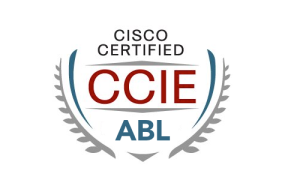Cisco to Acquire Embrane, Adding Layer 4-7 to ACI
 Having helped fund Embrane, Cisco is ready to acquire the Layer 4-7 startup.
Having helped fund Embrane, Cisco is ready to acquire the Layer 4-7 startup.
CloudFlare’s Buenos Aires data center now online

Che, ya estamos en Argentina! It is con placer that we announce our 32nd data center in Buenos Aires, Argentina. Our Buenos Aires data center is our 5th in Latin America following deployments in Santiago, São Paulo, Medellin, and Lima. As of this moment, CloudFlare is now mere milliseconds away from nearly all of Latin America's 300 million Internet users.
Argentina may be better known as the land of bife and malbec, but it is also home to a thriving tech community, including several well known start-up accelerators such as Startup Buenos Aires, Wayra and NXTP Labs (a CloudFlare customer!). At CloudFlare, we know a thing or two about the challenges of building a technology company, and we're proud to support the fast delivery of Internet applications for users in Argentina, as well as those who create them.
Don't cry for me Argentina

Although not commonly known, the title of the famous song from the musical Evita originates from an epitaph on a plaque honoring Evita Peron, and roughly translates as: "Don't cry for me Argentina, I remain quite near to you." Unfortunately, when it comes to the Internet, there is plenty of Continue reading
Is it safe to use public Wi-Fi networks?
Wi-Fi has significantly changed the way we work and play, enabling us to interact with the digital world from anywhere in the physical world. Furthermore, free Wi-Fi access is on the rise, from local coffee shops to international restaurant chains. However, the convenience of free Wi-Fi comes with some real threats, from computer viruses to identity theft.
Wi-Fi is a type of wireless local area network (WLAN) technology that enables an electronic device such as a laptop or smartphone to exchange data or connect to the Internet using radio waves. The core technology behind Wi-Fi is a device called an access point, which acts like a bridge between the wired network and the Wi-Fi network. The access point, in turn, typically connects to the Internet via a network router.
To read this article in full or to leave a comment, please click here
SCP File To ASA
Need to do this a few times for some work. It looks like the ASA is a bit picky about how you specify the destination location when you try and do it from a UNIX box.
Enable SSH copy on the ASA
ssh scopy enable
Copy the ASA image from the local directory on your UNIX box to the device.
scp -v asa825-51-k8.bin username@IP_ADDRESS:disk0:asa825-51-k8.bin
If you don’t use this format the UNIX box will give you an error message along the lines of “lost connection”, though the transfer will seem to have completed.
Cisco Introduces Two New Cisco CCIE Logos

Thanks to my contacts in Cisco PR I’m really excited to be able to share the news that Cisco is introducing two new CCIE Logos for 2015, under the title of “CCIE ABL”. If you’re wondering what “ABL” is, it’s not another specialization track, but rather it signifies progress towards the ultimate goal of a CCIE number.
Phillip A. Prull is the Senior VP with the responsibility to oversee the valuable CCIE® brand for Cisco, and he explained to me why Cisco felt that they needed an additional logo:
“One of the things we recognized was that many engineers were working for many months – even years – towards passing our rigorous CCIE® lab exam, but until they finally achieved that success, many of them told us that they felt unable to demonstrate to potential employers that they had made progress towards that goal. In response, we have created a new logo – the Cisco CCIE® ABL™.
Beginning in April 2015, any candidate who has passed a CCIE qualification exam (aka the “written”) will be able to download the new CCIE® ABL™ logo from our Certification Tracking System, and use it on their resumés and business cards, subject to Continue reading
Ethernet over Fibre Channel
Since the 80’s, Ethernet has dominated the networking world. The LAN, the WAN, and the MAN are all now dominated by Ethernet links. FIDDI, HIPPI, ATM, Frame Relay, they’ve all gone by the wayside. But there is one protocol that has stuck around to run alongside Ethernet, and that’s Fibre Channel. While Fibre Channel has mostly sat in the shadow of Ethernet, relegated to only storage traffic, it’s now poised to overtake Ethernet in the battle for the LAN. And the way that Fibre Channel is taking on Ethernet is with Ethernet over Fibre Channel.
Suck it, Metcalfe
While Ethernet has enjoyed tremendous popularity, it has several (debilitating) limitations. For one, forwarding is haunted the possibility of a loop, and Spanning Tree Protocol is required to keep a watchful eye. Unfortunately, STP is almost as bad as a loop, with the ample opportunity for misconfigurations (rouge root bridges) and other shenanigans. TRILL, a Layer 2 overlay for Ethernet that allows multi-pathing, hasn’t found its way into a commercial product yet, and its derivatives (FabricPath from Cisco and VCS from Brocade) haven’t seen much in the way of adoption.
Rathern than pile fix upon fix on Ethernet, SAN administrators (known for Continue reading
F5 Data Groups, Wildcards and tmsh
Just a quick note about a problem I ran into with adding data groups to an F5 system using tmsh. I wanted to add a string data group containing a list of URIs mapping to other URIs. This was for use in an iRule that will redirect these URIs.
So I thought that this tmsh script would do the trick:
modify ltm data-group redir_uris records add {"/first-uri" { data "/new-uri"}}
modify ltm data-group redir_uris records add {"/second-uri" { data "/new-uri"}}
Every time I tried it, I got this result:
Syntax Error: the "create" command does not accept wildcard configuration identifiers
Hmm. But I don’t have any wildcards. So what’s the problem? I couldn’t figure it out at the time, and ended up having to resort to manually entering the data group via the web interface. A bit slow, but luckily it was only around 20 entries.
Today I found out what was going wrong: SOL12999: “Data group records beginning with a slash character cannot be added using tmsh.”
Description: You cannot add data group records that begin with a slash ( / ) character to data groups using tmsh.
This issue occurs when all of the following conditions are met:
- You Continue reading
Arista EOS Available on Whitebox Switches
A few months ago Gigamon did the right thing: they figured out that their true value lies not in the hardware boxes, but in the software running on them, and decided to start offering their GigaVUE-OS on whitebox switches.
So far, Arista is the only other networking vendor that figured out it doesn't make sense to resist the tide - Arista EOS is now available on Open Compute Networking whitebox switches.
Update 2015-04-02: If you followed the links in this blog post, you probably figured out that it’s an April Fools’ one. However, that’s not the end of the story…
Read more ...